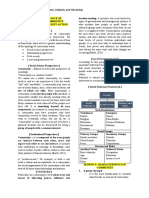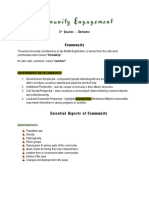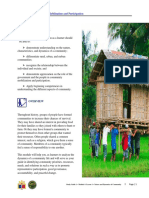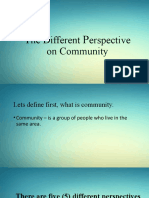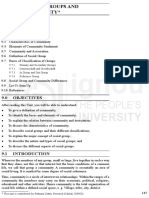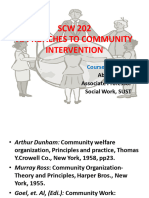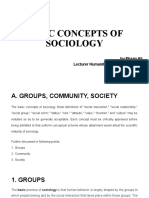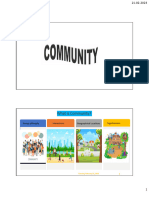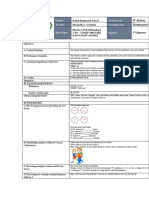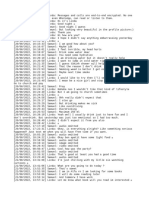0% found this document useful (0 votes)
19 views69 pagesConcept of Community
The document discusses the concept of community in social work, outlining various types such as primary, secondary, and tertiary communities, as well as formal and informal communities. It details the elements that constitute a community, including shared identity, locality, and community sentiment, and highlights the dimensions of community, including technological, economic, political, and social aspects. Additionally, it emphasizes the importance of community participation in fostering progressive change and the structural frameworks that support community functioning.
Uploaded by
Ray Mart DayadayaCopyright
© © All Rights Reserved
We take content rights seriously. If you suspect this is your content, claim it here.
Available Formats
Download as PDF, TXT or read online on Scribd
0% found this document useful (0 votes)
19 views69 pagesConcept of Community
The document discusses the concept of community in social work, outlining various types such as primary, secondary, and tertiary communities, as well as formal and informal communities. It details the elements that constitute a community, including shared identity, locality, and community sentiment, and highlights the dimensions of community, including technological, economic, political, and social aspects. Additionally, it emphasizes the importance of community participation in fostering progressive change and the structural frameworks that support community functioning.
Uploaded by
Ray Mart DayadayaCopyright
© © All Rights Reserved
We take content rights seriously. If you suspect this is your content, claim it here.
Available Formats
Download as PDF, TXT or read online on Scribd
/ 69

